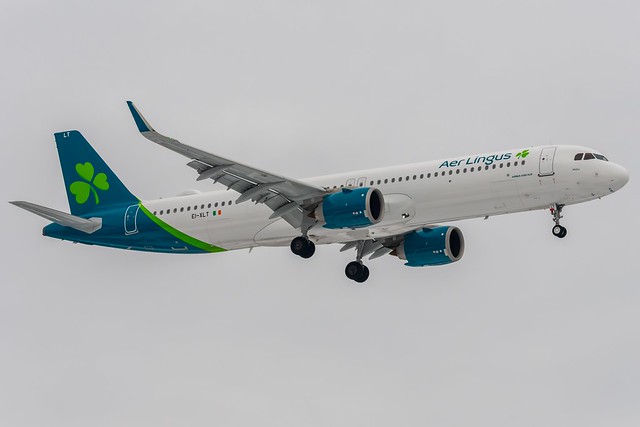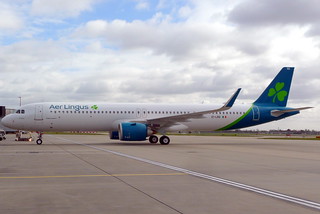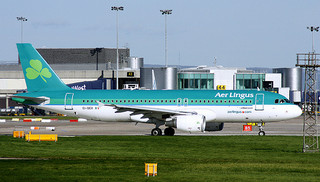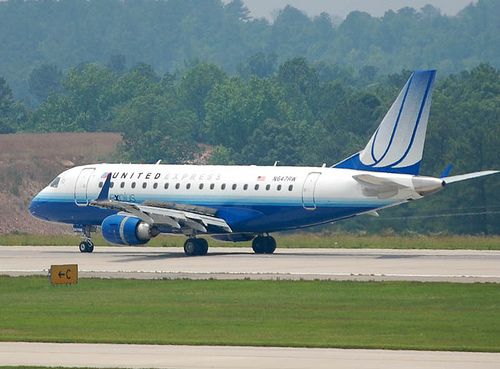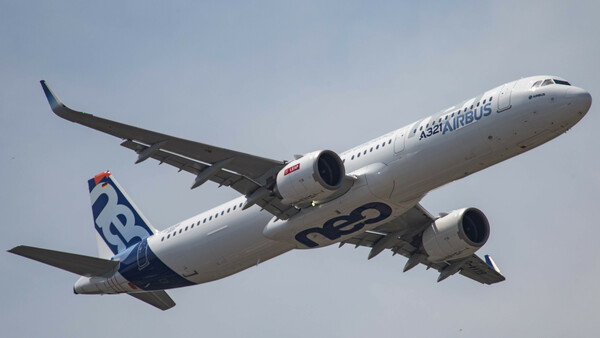Lingus A320 near Cork on Nov 2nd 2017, smoke in cockpit
Last Update: May 10, 2019 / 16:49:07 GMT/Zulu time
Incident Facts
Date of incident
Nov 2, 2017
Classification
Incident
Cause
Smoke in cockpit
Airline
Aer Lingus
Flight number
EI-712
Departure
Cork, Ireland
Destination
London Heathrow, United Kingdom
Aircraft Registration
EI-GAL
Aircraft Type
Airbus A320
ICAO Type Designator
A320
The airline reported the aircraft returned to Cork due to a technical issue. A number of passenger exited the aircraft via the overwing exits, the majority disembarked normally via stairs. All passengers have been taken to the terminal and are being taken to London on the next flight.
The Irish AAIU dispatched investigators on site to determine the level and extent of investigation into the emergency descent and landing at Cork.
On May 7th 2019 the AAIU released their final report (Editorial note: the link was changed by AAIU on May 10th 2019) concluding the probable cause of the serious incident was:
Unintended use of the emergency overwing exits, following a return to the departure airport, due to fumes entering the cockpit.
Contributory Cause(s)
- Rear bearing failure of the avionics bay blower fan.
- Heightened alertness among passengers due to diversion.
- Visual cues to passengers who saw emergency responders outside the aircraft.
- Similarity between rapid disembarkation instruction and emergency evacuation instruction.
- Direction to the passengers following the rapid disembarkation direction to “use the nearest available exit.”
The AAIU reported the flight crew performed two rotations from Cork to Heathrow that day. During the descent into Heathrow on the first flight the crew noticed a burning odour, which dissipated however after the captain had turned off the cockpit floor heaters suspecting they were the source of the odour. Maintenance checked the aircraft according to the troubleshooting manual but could not find any fault. The aircraft returned to Cork without incident and departed for the incident flight. While climbing through FL260 the crew again noticed fumes, this time strong and persistent. The crew donned their oxygen masks, declared Mayday and returned to Cork. The crew worked the "SMOKE/FUMES/AVNCS SMOKE" checklists, however, were unable to identify the source of the fumes. While working the second part of the checklist to reconfigure the electric configuration the crew needed to revert to manual flying with the flight directors being not available. When the generators were brought back online, the systems did not completely restore, the flight directors remained unavailable. The captain flew the landing to runway 35 manually.
After landing the crew assessed the situation and was satisfied, that taxiing to the apron was safe. The crew taxied the aircraft to the stand, set the park brake, assessed the situation again and found there were still fumes in the cockpit, the captain thus decided to perform a rapid disembarkation. While most of the passengers and crew disembarked via the front and aft steps, the passengers in the emergency exit rows opened the emergency exit doors, about 32 passengers stepped onto the wings, half of them used the emergency slides. The other half returned to the cabin and disembarked via the stairs.
There were no injuries, however, one person felt unwell and was taken to a local hospital.
The hatches of the emergency exits sustained impact damage when the were ejected onto the wings and onto the ground.
Maintenance identified the avionics bay blower fan as source of the fumes.
The AAIU reported: "When this conversation was completed, the Commander gave the Rapid Disembarkation instruction in accordance with the Operator’s Standard Operating Procedure (SOP), “Attention, attention, this is the Captain. Disembark the aircraft immediately, disembark the aircraft immediately.”"
The AAIU analysed the flight crew response:
As soon as the fumes were detected, the Flight Crew immediately informed ATC that they had a problem and were in the process of troubleshooting it. They then initiated the appropriate aircraft checklist which was the ‘SMOKE/FUMES/AVNCS SMOKE’. As they were working through the checklist, the Flight Crew paused intermittently to deal with communications from ATC, brief the Cabin Crew and inform the Passengers of their intention to return to EICK. During this period both Pilots had a high workload, but were task-focussed and composed throughout.
The AAIU analysed the inadvertent emergency evacuation:
During this occurrence, the passengers seated in the overwing emergency exit rows initiated a disembarkation of the aircraft through the overwing emergency exits. This was not the exit procedure that the Commander had called for. However, the passengers heard the Commander give an unfamiliar instruction: “Attention, Attention, this is the Captain, disembark the aircraft immediately”, which appears to have been interpreted as a direction to evacuate the aircraft. An aircraft evacuation is a rare occurrence and not something that most passengers would have experienced before. A misinterpretation of the Commander’s instruction is understandable when one considers the entire sequence of events:
- The passengers had been informed by the Commander that there was a technical problem with the aircraft and that they were returning to Cork;
- Some passengers knew from the sound of the Commander’s voice that he was wearing an oxygen mask;
- The passengers could likely see emergency services waiting on the runway for the aircraft;
- The emergency services followed the aircraft to stand and positioned themselves around the aircraft, pointing fire hoses at the aircraft;
- The Commander made an unfamiliar announcement directing the passengers to disembark;
- The Commander’s instruction was followed by a subsequent direction from the SCCM to “…make your way to the nearest exit.”
The passengers in this occurrence had effectively been primed to a higher level of alertness and therefore interpreted the Commander’s instruction as a full evacuation.
An emergency responder boarded the aircraft through the forward aircraft doors two seconds before the first overwing exit was opened. Due to the close timing of these two events, the Investigation does not believe that the visibility of an emergency responder in the cabin was a factor in the passenger’s decision to deploy the emergency overwing exits.
This sequence of events led to an unintended outcome. However, it does serve to highlight the importance of procedures and training that are in regular use in commercial aviation. In this instance, the passengers seated at the overwing emergency exits had been well-briefed in the use of the emergency exits, and therefore were able to take action, successfully deploying the emergency exits as soon as they perceived an emergency evacuation was required. The professionals involved; flight crew, cabin crew, ATC and emergency responders immediately initiated their standard operating procedures and managed the situation to its conclusion.
The AAIU analysed with respect to electrical issues noticed by cabin crew:
During the occurrence flight and landing the Cabin Crew noted several issues related to the electrical system of the aircraft. Some items of cabin equipment did not operate as expected and the Cabin Crew were aware of unusual noises and vibrations in the floor beneath the cabin. The electrical issues were related to the emergency electrical configuration of the aircraft and the noises could be attributed to the deployment of the RAT.
In this occurrence, the Cabin Crew were able to manage the difficulties that arose in the cabin, and do not appear to have been unduly disturbed by them. However, such configuration and noises have the potential to unsettle a cabin crew. Since the occurrence, the Operator has reviewed the training that cabin crew receive to prepare for such incidents. The Operator determined that cabin crew training in this area could be strengthened by improving the capability of their in-house cabin simulator.
Aircraft Registration Data
Incident Facts
Date of incident
Nov 2, 2017
Classification
Incident
Cause
Smoke in cockpit
Airline
Aer Lingus
Flight number
EI-712
Departure
Cork, Ireland
Destination
London Heathrow, United Kingdom
Aircraft Registration
EI-GAL
Aircraft Type
Airbus A320
ICAO Type Designator
A320
This article is published under license from Avherald.com. © of text by Avherald.com.
Article source
You can read 2 more free articles without a subscription.
Subscribe now and continue reading without any limits!
Read unlimited articles and receive our daily update briefing. Gain better insights into what is happening in commercial aviation safety.
Send tip
Support AeroInside by sending a small tip amount.
Related articles
Lingus A21N at Dublin on Dec 13th 2025, hard landing
An Aer Lingus Airbus A321-200N, registration EI-XLT performing flight EI-155 from London Heathrow,EN (UK) to Dublin (Ireland), landed on Dublin's…
Lingus A320 at Madrid and Dublin on Apr 24th 2024, chemical odour on board
An Aer Lingus Airbus A320-200, registration EI-DEJ performing positioning flight EI-593 from Madrid,SP (Spain) to Dublin (Ireland) with 2 crew on…
Lingus A21N at Washington on Aug 30th 2023, false landing and tail strike
An Aer Lingus Airbus A321-200N, registration EI-LRD performing flight EI-117 from Dublin (Ireland) to Washington Dulles,DC (USA), was landing on…
Lingus A20N enroute on Sep 20th 2024, loss of radio and radar contact
An Aer Lingus Airbus A320-200N, registration EI-NSF performing flight EI-506 from Dublin (Ireland) to Bordeaux (France), was enroute at FL330 about…
Lingus A320 at Frankfurt on May 30th 2025, smell in cabin
An Aer Lingus Airbus A320-200, registration EI-DER performing flight EI-657 from Frankfurt/Main (Germany) to Dublin (Ireland), was climbing through…
Newest articles
Republic E170 at Savannah on Jan 8th 2026, smoke on flight deck
A Republic Airways Embraer ERJ-170 on behalf of United, registration N647RW performing flight UA-3496 from Chicago O'Hare,IL to Savannah,GA (USA)…
Indigo A21N at Gorakhpur on Jan 11th 2026, bird strike
An Indigo Airbus A321-200N, registration VT-IMR performing flight 6E-437 from Gorakhpur to Bangalore (India) with 216 people on board, was climbing…
Subscribe today
Are you researching aviation incidents? Get access to AeroInside Insights, unlimited read access and receive the daily newsletter.
Pick your plan and subscribePartner

ELITE Simulation Solutions is a leading global provider of Flight Simulation Training Devices, IFR training software as well as flight controls and related services. Find out more.
SafetyScan Pro provides streamlined access to thousands of aviation accident reports. Tailored for your safety management efforts. Book your demo today
AeroInside Blog
Popular aircraft
Airbus A320Boeing 737-800
Boeing 737-800 MAX
Popular airlines
American AirlinesUnited
Delta
Air Canada
Lufthansa
British Airways


